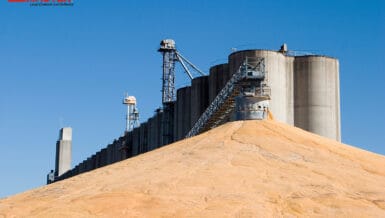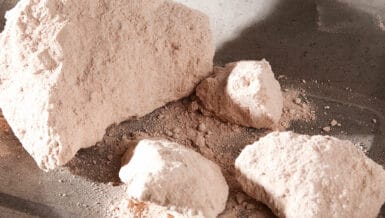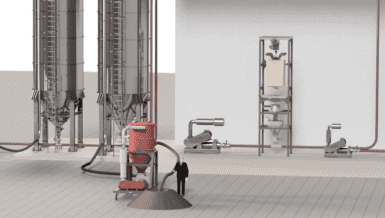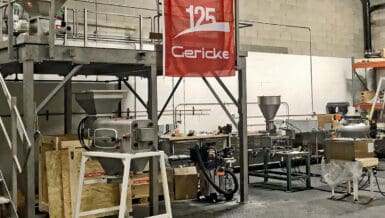Understanding the density of the material is the key parameter and the first step, no matter how many different components you are planning to use in your blend. Misconceptions regarding the relationship between density and weight are common, but density (mass density) represents the concentration of a substance within a specific volume.
Give Your Mix Some Character
Consistent homogeneity of powder mixtures is crucial for industries, ensuring products with stable quality, texture, and other desirable properties. Any successful blend needs to start with careful powder characterization. Understanding numerous criteria that may have an impact on the overall blend is necessary. Leaving out this important step might have negative effects. To ensure the best blending outcomes, manufacturers can foresee and handle any issues by fully knowing the powder’s characteristics.
Powder’s Inner Secrets
The first step in unlocking a material’s underlying mysteries is to collect extensive data on its physical characteristics. These properties include density, viscosity, and flow characteristics. The apparent density, expressed in grams per cubic centimeter, represents the weight of a unit volume of loose powder. It holds significant importance for various processing parameters, such as compaction tooling design and press motion requirements. The apparent density is influenced by factors like material density, particle size, size distribution, shape, surface area, roughness, and particle arrangement. Typically, decreasing particle size decreases apparent density due to increased friction and a larger specific surface area. However, spherical powders with low friction may not follow this trend. Controlling the apparent density within narrow limits is critical to ensuring consistent and reliable compaction outcomes in industrial processes.






Density, accurate formulation, and load levels of the machine are crucial when faced with the challenge of loading a machine with numerous components and a significant quantity of material without prior knowledge of these characteristics. To tackle this, careful planning, assessment of machine capabilities, estimation or approximation based on available information, trial testing, and vigilant monitoring are necessary. By adhering to these steps, risks can be mitigated, and the likelihood of obtaining the desired outcomes is increased. Understanding the physical properties of the materials, such as particle size and density, is vital as they impact the tendency of powders to segregate or mix effectively.
To delve deeper into the inner secrets of materials, it is crucial to understand the properties that can give rise to segregation. Powders tend to separate due to factors such as variations in particle size, density, form, and durability. Combining and maintaining equilibrium between the mixing and demising phases improves when particles have identical size, shape, and density. By comprehending these physical properties, scientists and engineers can gain valuable insights into the behavior of materials during various processes, enabling them to optimize formulation, mitigate segregation issues, and attain desired material characteristics.
The Material Density
Manufacturers often struggle to determine the density of each material. This lack of awareness can severely impact the loading process, resulting in inaccurate formulations and compromised batch quality. It points to the fact that proper machinery loading is very important for achieving accurate formulations and desired batch quality.
One of the solutions is the density test kit, which enables manufacturers to accurately measure and evaluate their materials’ density. These test kits offer a convenient and reliable method for gathering essential data before beginning the blending process. In addition, there are laboratories on the market that perform material density analyses by conducting testing on samples for customers. Giving clients a thorough understanding of material density enables manufacturers to improve their blending procedures, address any problems, and reliably achieve the target batch quality.






Conclusion
If you don’t know your powders, you can develop problems. You won’t be able to identify the source of the issue or understand how the changes in your material’s physical properties are affecting it. For those who are dedicated to creating the ideal mix, the only alternative is to always have full powder characterization for the mix formulation.
References:
- How to Calculate Composite Density | Sciencing
- Bulk Properties of Powders (nist.gov)
- first-page-pdf (sciencedirect.com)
- Effect of powder densities, particle size and shape on mixture quality of binary food powder mixtures – ScienceDirect
AUTHOR: George Paffendorf – VP of Operations – Advanced Powder Solutions











































